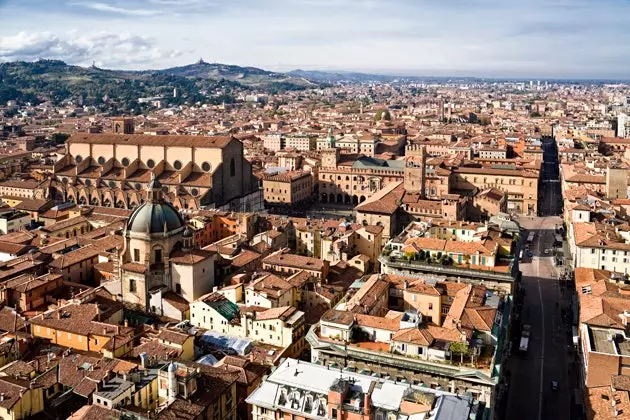
The other Bologna plan, the one you'll really like
Bologna is not the first city that appears when thinking: "Let's go to beautiful Italy" . Crushed by the weight of Florence and Venice, so close, by the exuberant Rome and by the stylish Milan, Bologna is associated with arcades and the University, founded in 1088 ; we repeat: in 1088. But Bologna has no need to vindicate itself because it knows itself very well. A city that has the oldest university in the world you can look over your shoulder at the rest of the planet.
Bologna is protesting, vital and manageable . A weekend there means walking miles under the arcades, going into all the possible churches, looking around several times Le Due Torri , sneak into the palaces where its thousands of students study, eat tortellini (never spaghetti) and have an aperitif. The topic is to say that it is young and old, but no matter how hard you try, you can't think of a better way to describe it.
These are the core subjects of this other Bologna plan.
THE SPRITZ AT 7:00 PM . There is a lot of literature about the Italian aperitif. Even a decalogue (okay, this is self-promotion) where it is explained what it is and how to behave among Aperol and mortadella . In almost any street in Bologna you can have an aperitif alternating with locals, which is what any contemporary traveler aspires to. But if we do it in Pescherie Vecchie or Via del Pratello we will have the certainty of being where we have to be. And you have to lean out, or lean out and drink at the Osteria del Sole; It's loud, casual, and doesn't serve food, but it lets you take what you want, including the melanzane your mamma made.
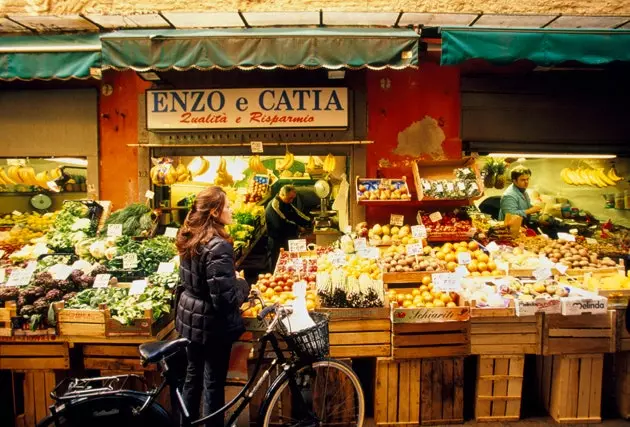
Via delle Pescherie
EAT TORTELLINI IN BRODO Some tortellini that float in the broth and to which grated cheese is added? Tortellini soup? That I'm going to catch a plane just for that? Of course . And you're going to take them at Diana, surrounded by an interesting fauna (oh, the coats of Italian men...) and served by waiters dressed as waiters. Reserve to avoid frustration.
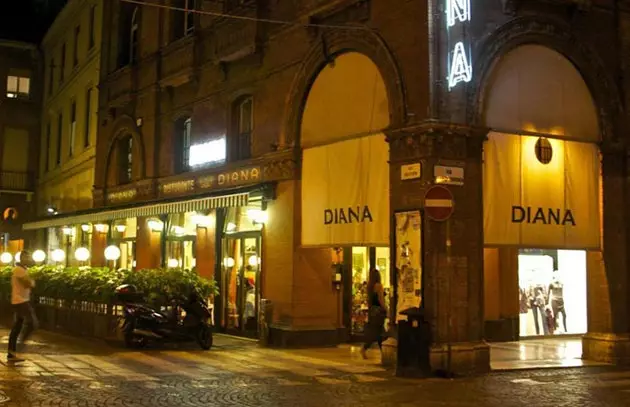
Tortellini soup. REALLY.
MORANDI. This painter, whose work is an island and only resembles itself, was from Bologna. Following in his footsteps can be the alibi of a route through the city. There is a Morandi Museum that houses the largest public collection of morandis . Now part of the MAMBO, Museum of Modern Art of Bologna . You can also visit by appointment his house, his workshop, where he lived and worked from 1910 to 1964. Another way to capture the Morandian world is by visiting the Academy of Fine Arts , in the university neighborhood. There he studied and gave classes in etching. It is still a school and has the charm of schools. It is possible to enter and browse. And, by the way, get excited. Since we are, the next door is the National Pinacoteca. Another example of the artistic supremacy of Italy.
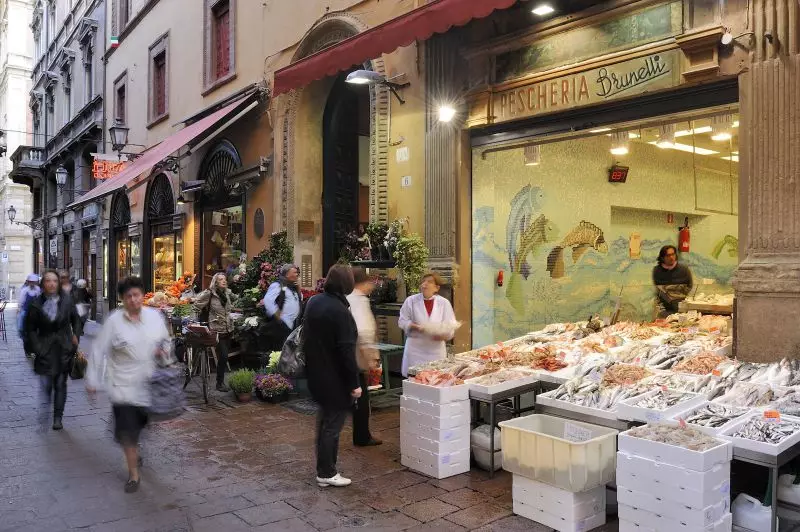
Buy on the street, gain in health
GASTROSHOPING . Buying something that does not exist in another country is already an impossible task. The markets, supermarkets and food stores are always strongholds of interesting shopping wherever we go. In Bologna you can buy amorphous cheeses, mortadella with the diameter of Planet Earth, handmade tortellini at the price of handmade tortellini and many more delicacies . We can find them in the ineffable Eataly and throughout the Mercato di Mezzo area, in the Via Clavature, Via degli Orefici and Via Pescherie Vecchie . A stop at Tamburini, one of the city's gastro totems, is key. Of course, there is pasta everywhere, but let's line it up with the story of where we bought it and how nice the person who sold it to us was, and now we have pasta with storytelling. And don't ask for bolognese sauce because here it is, simply, ragout.
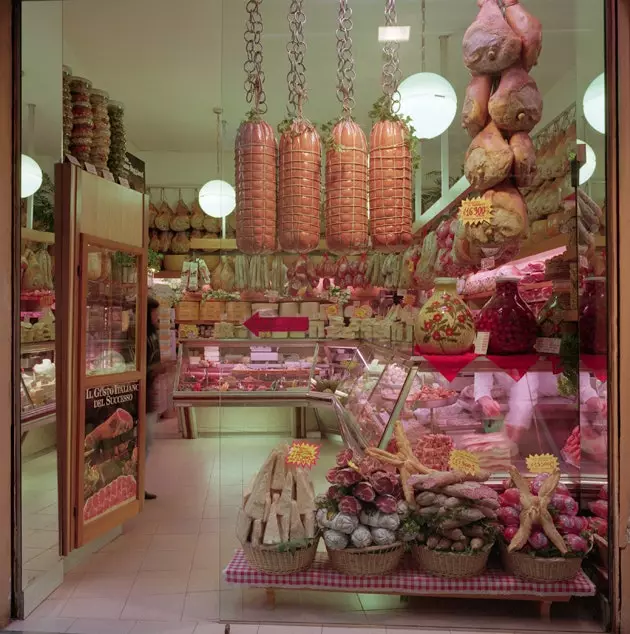
gastroshopping streets
EXPRESS MID-MORNING . Thus, fast, scarce and intense, as it is liked here. In Zanarini, in the Piazza Galvani , we will have a coffee in an elegant setting, surrounded by gentlemen and ladies who do the same as us wearing good leather shoes. They, with fur. They with sunglasses.
THE TWO TOWERS. They are the visual reference of the city, the equivalent of the Empire State in New York; the difference is that these are slightly older. These two strange skyscrapers were built in the Middle Ages and there they continue, strange and, one of them, very crooked. They are the Asinelli and the Garisenda and so they call them, with those names of stepsisters from fairy tales or from Game of Thrones as if they were family. Mental note: La Garisenda at the steepest.
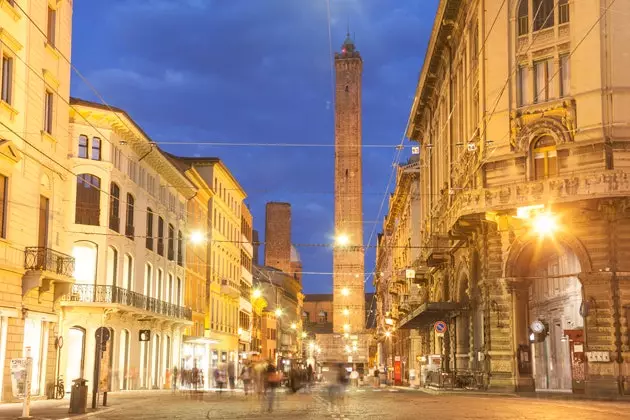
The two Towers
PLAZA LIFE . The square, as a public meeting and exchange space, continues to fulfill this function in Bologna. You just have to order a coffee (wow, we've already had two, we're going to get very nervous) in the Piazza de Santo Stefano, an atypical place . Why build a rectangular or square plaza when you can make it triangular? It is presided over by a church, the Basilica Sanctuary Santo Stefano (which, actually, are four: the crocifisso church (Eleventh century) , San Sepolcro, Santi Vitale e Agrícola (V century) and Santa Trinita . There were seven, originally, that's why they also call it the Le Sete Church square. This place is like a condensed Bologna: there are arcades, traditional shops, people having an aperitif, children playing, tourists taking photos and that feeling of high self-esteem that Italy conveys so well.
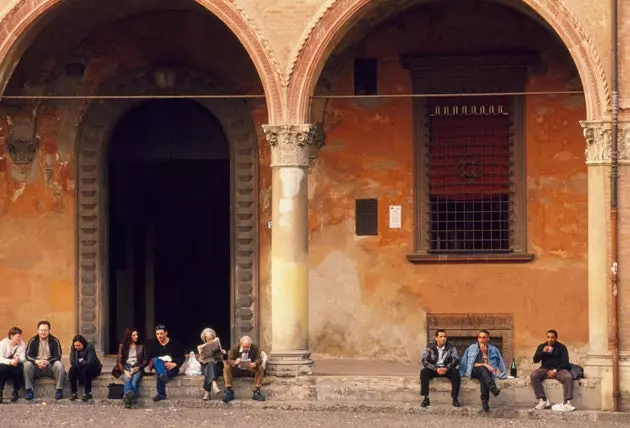
Piazza San Stefano
There are many more subjects of this alternative Bologna plan such as the visit on Royal College of Spain , the shops of Via dell'Archiginnasio, a dinner in Donatello or a visit to Ice Cream Museum . But these give us enough baggage to want to continue learning. And traveling and learning are synonymous. PS: We have managed to reach the end without writing that they call Bologna the rose (the Red) the dotta (the cultured) and the grass (the fat). But it's such a good expression that it was a shame to leave it behind.
Follow @anabelvazquez
*** You may also be interested in...**
- The oldest (and funniest) university cities in Europe
- Florence, for the love of art
- Venice Guide
- The Decalogue of the Italian Aperitif
